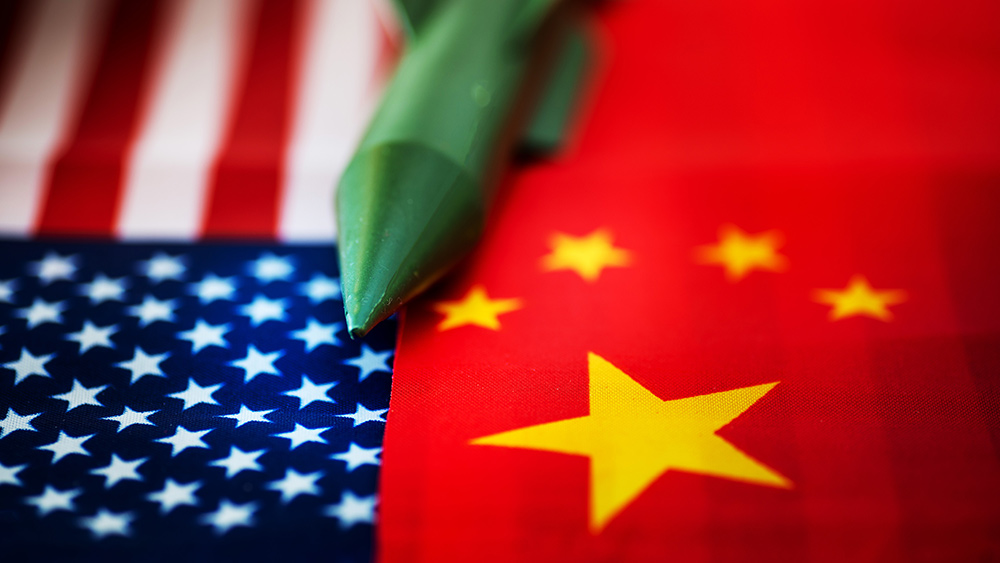Read the Beforeitsnews.com story here.
State Governments Preparing ‘Quarantine Facilities’ For Americans Unable to Isolate at Home
The Washington Department of Health is advertising job opportunities for employees to work in quarantine and isolation facilities that will be used to house Americans who are unable to quarantine at home, prompting fears that the program could eventually be used to forcibly detain people.
If society collapses, you can bet that the foods the pioneers ate will become dietary staples
The Lost Ways prepares you to deal with worst-case scenarios with the minimum amount of resources just like our forefathers lived their lives, totally independent from electricity, cars, or modern technology.
So pay chose attention because this video will change your life forever for the good!
Titled ‘Isolation & Quarantine Team Consultants’ – the job offers “continuous” employment with a salary of up to $4286 dollars a month.
The facility is located “within a motel in Lewis County” and employees will be tasked with providing for COVID infectees “transportation to and from the facility in vans that have been altered to separate air flow to protect the driver.”
“Team members provide for all aspects of the guest’s stay to include providing laundry services, delivering hygiene products, delivering ready-made foods or microwaveable foods to the guests,” states the job description.
“People who test positive for COVID-19 or who are exposed to someone who tests positive are asked to isolate or quarantine (I & Q) away from other people for 10 to 14 days in order to reduce risk of transmitting the virus to others,” states the Washington Department of Health website. “Most people are able to isolate or quarantine in their own homes. In Washington State, providing for I & Q is the responsibility of local jurisdictions.”

“The state Isolation and Quarantine facility was created for individuals who are not Washington residents but are traveling in our state and test positive for COVID-19 or who have been exposed to someone who tests positive and do not have a residence or other location in which to spend their 10-14 day isolation or quarantine period.”
The advertisement for people to work in quarantine facilities follows the CDC’s publication earlier this summer of a COVID-19 planning document that suggested relocating “high-risk individuals” to “green zones” or “camps” in order to keep them away from the rest of the population.
The document is called Interim Operational Considerations for Implementing the Shielding Approach to Prevent COVID-19 Infections in Humanitarian Settings and was originally published on the CDC’s official website on July 26, 2020.
You might be living in one of America’s deathzones and not have a clue about it
What if that were you? What would YOU do?
“Holy shit. The CDC actually put together a document to discuss putting high risk people into camps to “shield” low risk people from them,” Candace Owens tweeted.
The purpose of the strategy document is “to reduce the number of severe COVID-19 cases by limiting contact between individuals at higher risk of developing severe disease (“high-risk”) and the general population (“low-risk”).”
According to the CDC, in order to achieve this, “High-risk individuals would be temporarily relocated to safe or “green zones” established at the household, neighborhood, camp/sector or community level depending on the context and setting. They would have minimal contact with family members and other low-risk residents.”
Respondents on Twitter expressed concern that the program in Washington State will eventually be used to forcibly quarantine Americans who break COVID-19 isolation rules.
One user described the role as a “Covid Quarantine Internment Camp Counselor.”
A video posted to Twitter shows a ‘COVID Quarantine Site’ being built in Eatonville, WA for purposes similar to that described in the job advertisement.
As we highlighted last year, Authorities in Quebec City, Canada announced they will isolate “uncooperative” citizens in a coronavirus facility, the location of which remains a secret.
New Zealand also announced plans to placed COVID infectees and their family members in “quarantine facilities.”
Back in January, German authorities also announced they would hold COVID dissidents who repeatedly fail to properly follow the rules in what was described as a ‘detention camp’ located in Dresden.






























